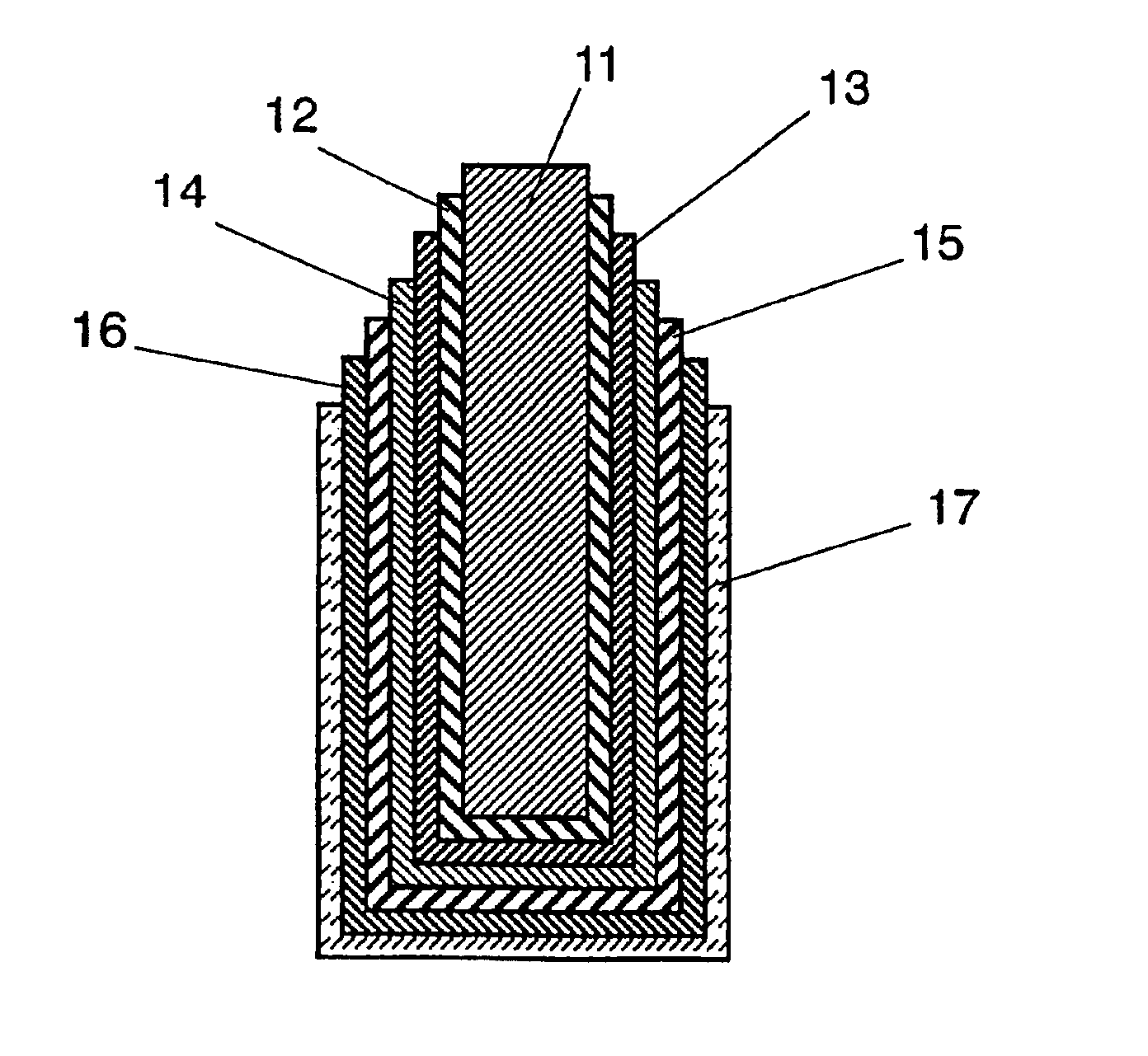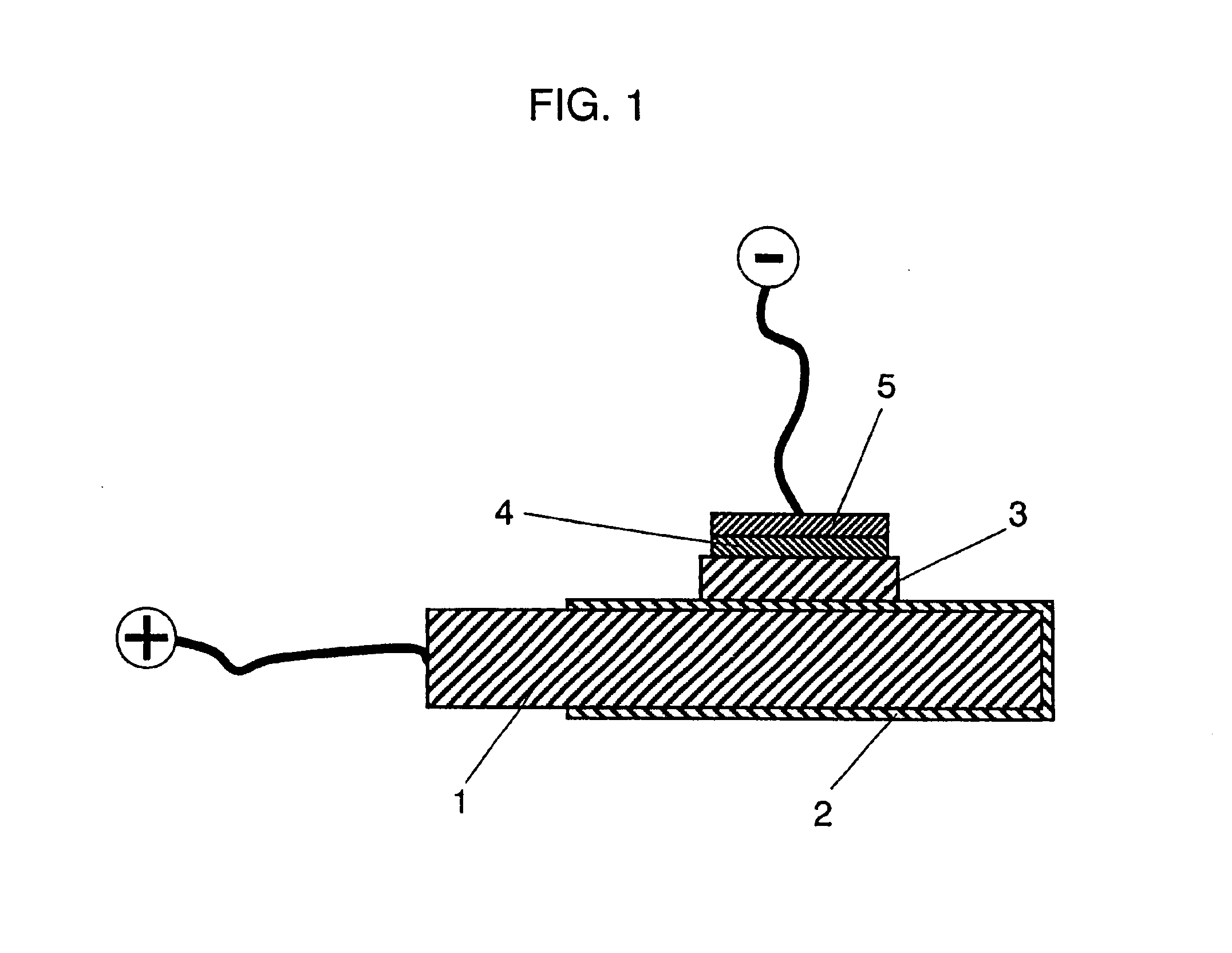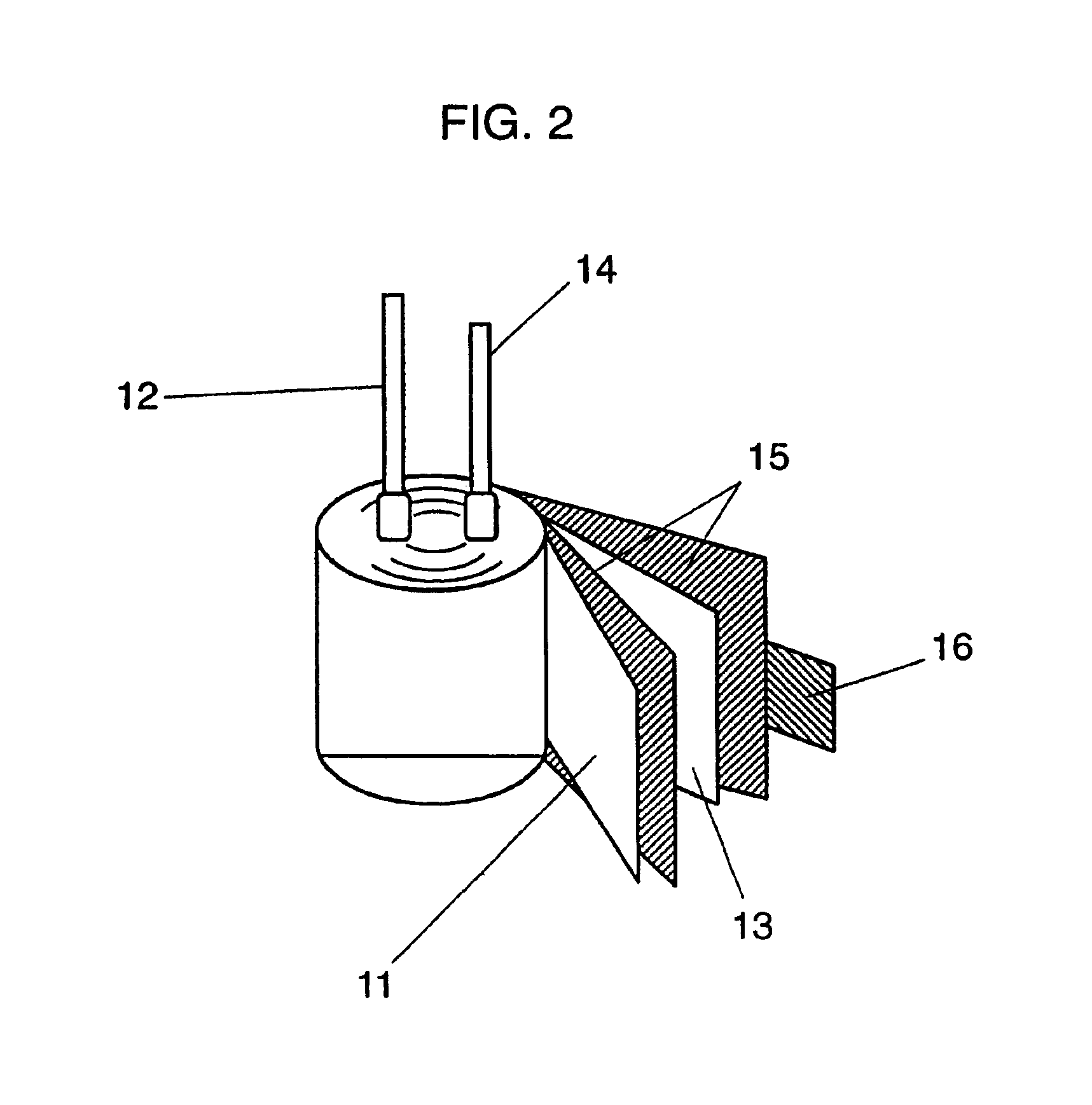Conductive composition precursor, conductive composition, solid electrolytic capacitor, and their manufacturing method
- Summary
- Abstract
- Description
- Claims
- Application Information
AI Technical Summary
Benefits of technology
Problems solved by technology
Method used
Image
Examples
first exemplary embodiment
Whether the conductive polymer used for the present invention takes the form of particles dispersed in the medium or an intrinsic solution is a matter of controversy.
For convenience, in the following explanation of the invention, a ‘conductive polymer solution’ refers to both of the dispersion and solution. In the same way, for convenience, additives are also referred to as being “dissolved”, including those dispersed in a colloidal state.
A series of methods for manufacturing the conductive polymer solution used in the present invention are already disclosed, and thus the applicable conductive polymer solution can be easily manufactured using these disclosed methods.
For example, methods of manufacturing poly-pyrroles are disclosed in Japanese Patent Laid-open Publication No. H6-206986 and by E. E. Havinga et al, Chemistry of Materials (American Chemical Society), 1 (6), pp650 (1989).
F. Yonas et al, Synthetic Metals(Elsevia Press), 85, 1397 and Hotta et al, ibid, 26, 267 disclose the...
example 1
Example 1 is described with reference to FIG. 1.
First, poly-pyrrole solution is prepared using the method disclosed in Chemistry of Materials (American Chemical Society), 1 (6), pp650 (1989). Conductive composition precursor containing poly-pyrrole, ortho-phosphoric acid, and medium is prepared by adding 0.01% of ortho-phosphoric acid to this poly-pyrrole solution.
The precursor is a smooth liquid similar to the solution without ortho-phosphoric acid. It also enables the creation of a conductive composition layer equivalent to that without additive when the precursor is applied to the substrate and the medium is then dried and removed.
Next, as shown in FIG. 1, an aluminum strip 1 of 99.99% purity and dimensions of 10×30×0.5 mm is prepared. After electrolytic polishing of aluminum strip 1 in sodium hydroxide solution, the strip is dipped in 3% ammonium adipate solution to a depth of approximately 20 mm, and voltage of 35 V is applied for 30 minutes at 70° C. to form anodized film 2.
Th...
example 2
Example 2 shows the effects of addition of (A) n-propyl phosphoric acid, (B) isopropyl phosphoric acid, (C) n-butyl phosphoric acid, or (D) n-hexyl phosphoric acid, instead of ortho-phosphoric acid as seen in Example 1. Other conditions are the same as those in Example 1 for preparing conductive composition precursor.
These precursors are also smooth liquid similar to those containing no additives. A conductive composition layer identical to that with no additives is also provided by applying these precursors to a substrate, and drying and removing the medium. A capacitor is manufactured in the same way as that in Example 1 using each of these precursors, and the same evaluations as those in Example 1 are implemented.
The results are shown in Table 1. It is apparent that all the capacitors in Example 2 have a higher withstand voltage than that in Comparative example 1, demonstrating the advantageous effect of the present invention.
PUM
| Property | Measurement | Unit |
|---|---|---|
| Electrical conductor | aaaaa | aaaaa |
| Hydrophobicity | aaaaa | aaaaa |
| Surface activity | aaaaa | aaaaa |
Abstract
Description
Claims
Application Information
 Login to View More
Login to View More - R&D
- Intellectual Property
- Life Sciences
- Materials
- Tech Scout
- Unparalleled Data Quality
- Higher Quality Content
- 60% Fewer Hallucinations
Browse by: Latest US Patents, China's latest patents, Technical Efficacy Thesaurus, Application Domain, Technology Topic, Popular Technical Reports.
© 2025 PatSnap. All rights reserved.Legal|Privacy policy|Modern Slavery Act Transparency Statement|Sitemap|About US| Contact US: help@patsnap.com



